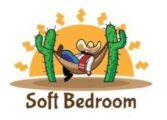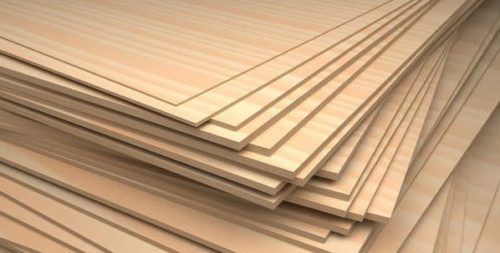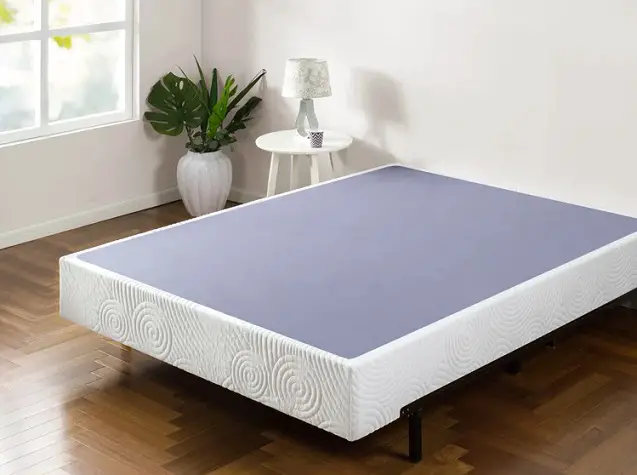A Bunkie board is a great mattress support system. One great advantage of a Bunkie board is that it does not add height or significant weight to the bed. Bunkie boards are usually 2-3 inches thick and weigh as little as 8 pounds.
However at times, one may not be able to have a Bunkie board at hand and you may think of alternative mattress support systems. What comes to mind as an alternative to Bunkie boards is the slats, plywood, or box spring.
Table of Contents
Why Would You Consider An Alternative To Bunkie Board?
There may be several reasons why you will need an alternative to the Bunkie board. This includes the following:
1. Bed Type
Some bed types are better off with Bunkie board alternatives than the Bunkie boards. The same goes for mattresses. Some may be better off without the support of a bunkie board.
2. Cost
Bunkie boards do not come cheap. Some are extremely costly and some alternatives may be cheaper than the Bunkie boards.
3. Taste and Preference
Some people may prefer to add height to the mattress and Bunkie board cannot do that. Your choice and preference will determine what you will use.
Bunkie Board Alternatives
1. Slats
Slats are wooden or metallic mattress support systems that can be input into a bed frame. Slats usually run across the length of the bed.
Slats will have spaces between them and the space may range from 3 to 6 inches wide. The width of the slat may also vary from 2-5 inches wide and usually 1 or 2 inches thick.
Slats can be removed from the bed frame although some slats are fixed into the bed frame.
They are bulky and heavy and will come in two separate pieces that lie end to end on the bed frame. This slotting reduces the weight and the bulkiness of the slats.
Why use slats?
Slats are a good alternative to Bunkie boards as they provide a much stronger mattress support system.
The pieces that make the slats can be replaced individually if damage occurs and the space between the slats allows for free movement of air and thus ensures the mattress is well aerated.
Since they are made of easily available materials, they are relatively inexpensive.
While slats may be a good alternative to Bunkie boards, they are usually heavy and add weight to the bed. Slats have gaps between them and these gaps may cause the mattress to sag and damage the mattress. This is especially true in foam and latex mattresses.
For this reason, the slats need to be closely spaced to prevent the mattress from sagging. To get the best results, use the slats with a Bunkie board or plywood on top.
2. Plywood
Plywood is made of thin sheets or plies of wood that have been glued together to produce a thin board. Plywood is lightweight and can be cut into any size you may please.
Plywood can be used to make a good Bunkie board alternative. You can DIY a plywood Bunkie board that will save on cost and time.
Plywood is especially useful with slats to provide additional support. It is inexpensive but will not be a very strong support system, unlike some other alternatives like the slats.
Wooden Bunkie boards usually expand and contract depending on the weather. Plywood is usually treated and will not expand or contract in hot or cold environments though it will be damaged by excess moisture.
When you cut plywood with a wooden saw, you will get rough edges that may cause damage to the mattress. You will need to sand the edges and get a smooth finish that will not cause any damage.
3. Box Spring
Box spring is made of a wooded or metallic frame that has coil springs in it and is covered in cloth. The box spring may also have slats in it instead of the coil springs and be covered in cloth.
Box springs provide a much stronger mattress support system and will absorb some of the weight subjected to the mattress. It will prevent the mattress from sagging and therefore ensure the mattress lasts longer.
The problem with box springs is that they are rather expensive compared with Bunkie boards and tend to add too much weight to the bed frame.
Box springs are not the best for foam and latex mattresses and you need to keep changing the position of the mattress to ensure no damage is done to it.
Box springs can be standard or low-profile ones. A standard box spring will have 8-12 inches of height added to the bed frame while a low-profile box spring will be 3-5 inches high.
Whereas a standard box spring is heavy and bulky, a low-profile box spring is lightweight and very portable.
Box springs can be split to reduce their weight and make them more portable.
Does The Mattress Type Determine The Bunkie Board Alternative?
Yes. The kind of mattress you are using will determine which Bunkie board alternative you will use. Different mattress types will behave differently on the same alternative materials.
Latex Mattresses
Latex mattresses will tend to sag between the spaces in the slats. They will be damaged and last a lot less. Natural latex is a far superior material to memory foam as it does not have the associated heat issues and is a naturally breathable material.
This means you can use a flat board beneath the latex mattress for support. You do not need spaced support like the slats and therefore the plywood will be the best alternative to a Bunkie board.
Memory Foam And Gel Mattresses
These mattress types are softer and will lose shape fast and require time to return to their original form. This means that they will need much stronger support than a latex mattress.
Memory and gel mattresses will be affected by mold if they are in a place with no proper air circulation.
You will therefore need a support system that allows free movement of air. For this reason, Slats are the best alternatives to the bunkie board. A slatted box spring will also be ideal.
Futon Mattress
A futon mattress comes with a futon frame that provides the support needed and therefore you may not need the Bunkie board.
A futon bed can be folded into a sofa and therefore has enough support and does not need a Bunkie board.
Hybrid Mattresses
Hybrid mattresses are either made of memory foam, latex, or gel and have an innerspring system. A hybrid mattress has a core support system that is 7-8 inches high.
Hybrid mattresses are breathable and therefore can be put on a completely flat support system without slats.
A hybrid mattress will use plywood or a box spring as an alternative to a Bunkie board. Slatted bed support can also be used.
Final Thoughts
An alternative to the Bunkie board needs not to be expensive and should not make the bed extra heavy unless you need the extra height to get in and out of bed.
Alternatives may even include cardboard, and cartons on top of slats to provide more comfort, especially where the slats are widely spaced and the mattress is sagging.


